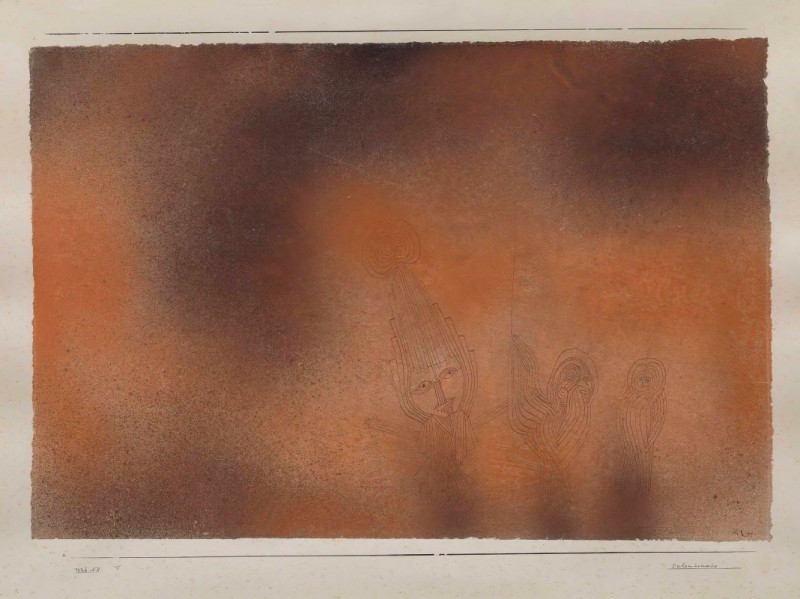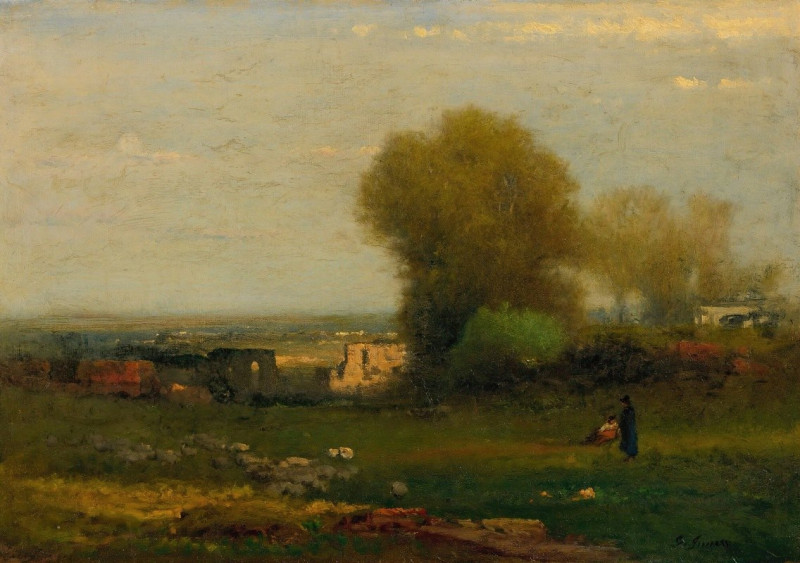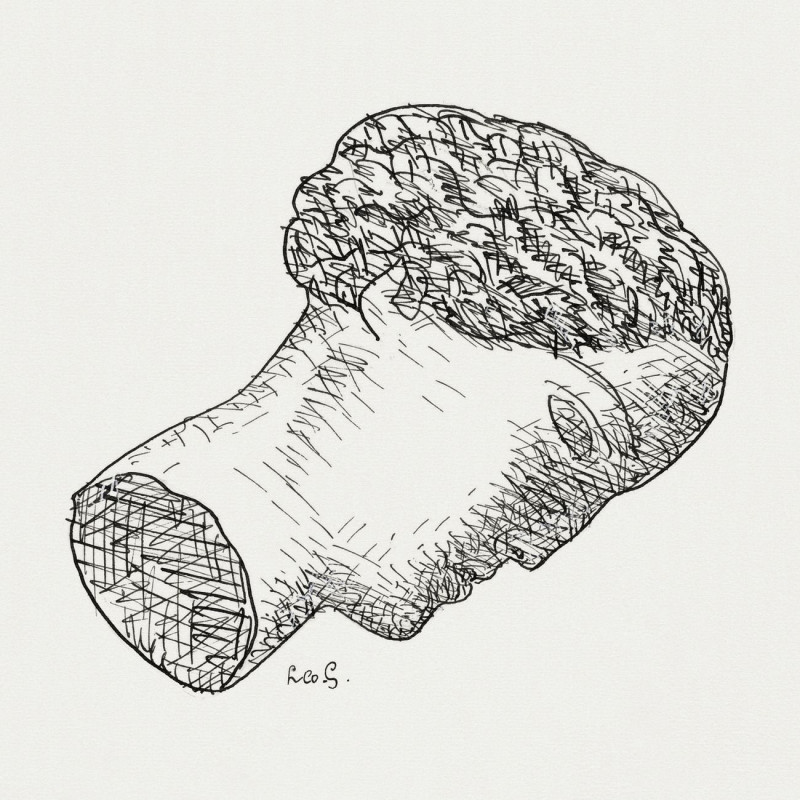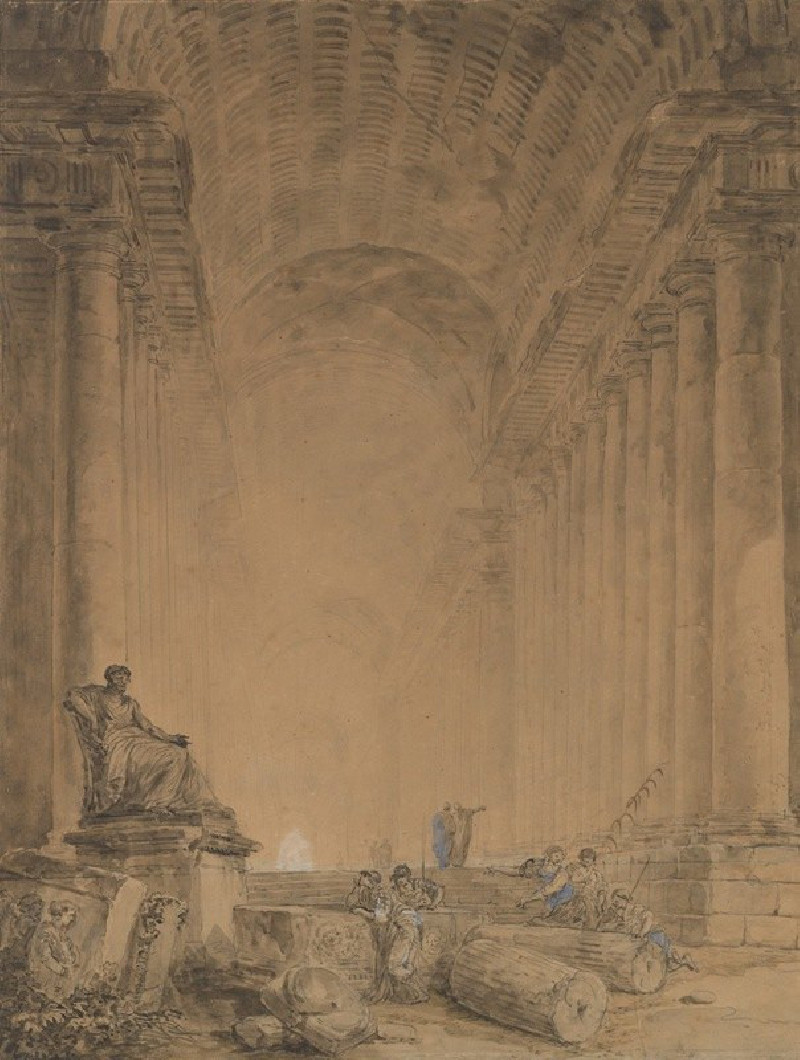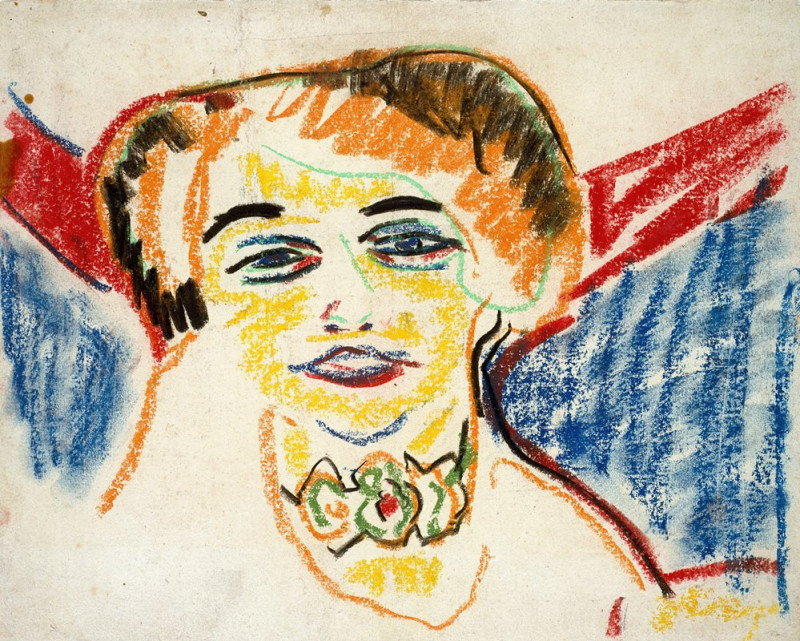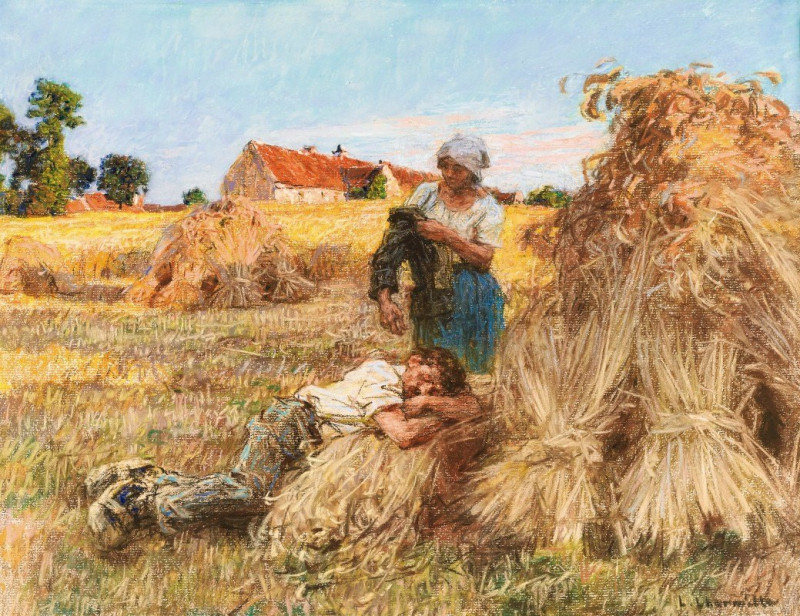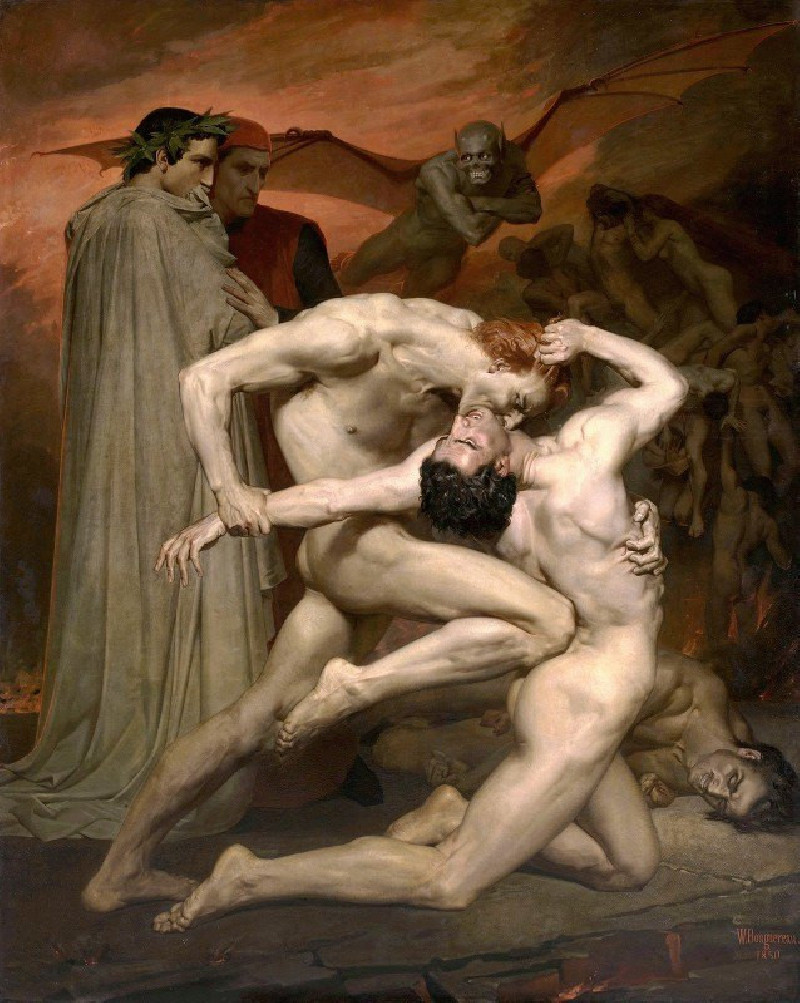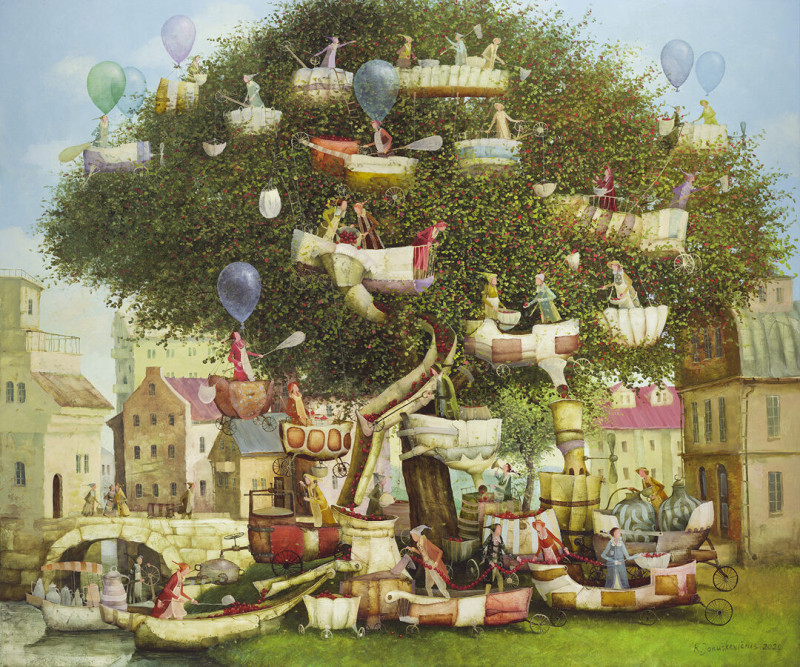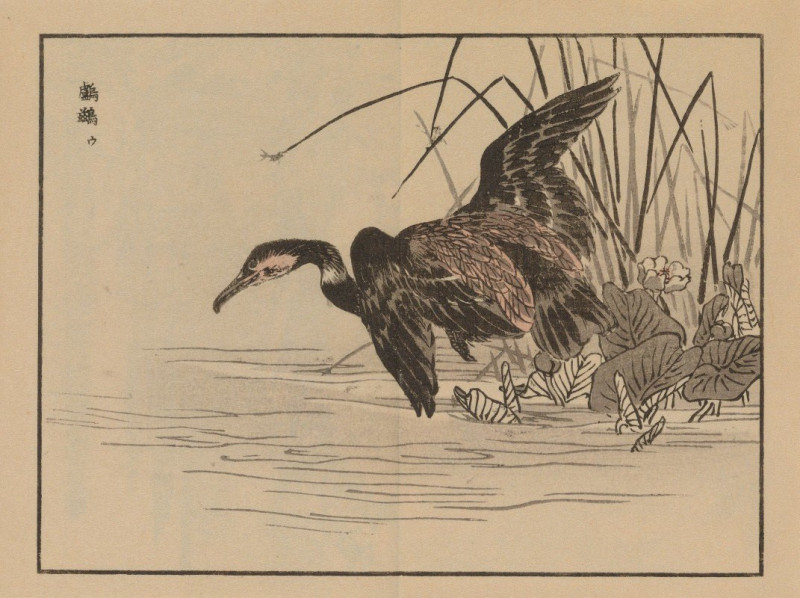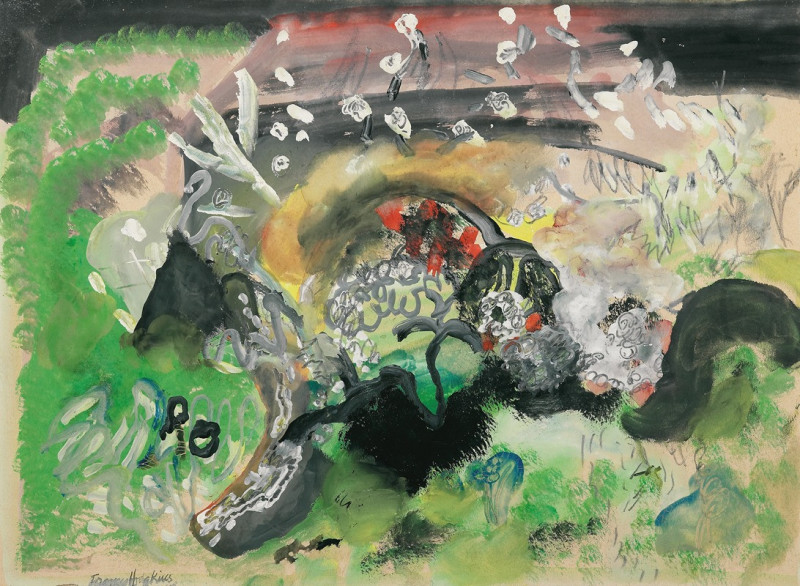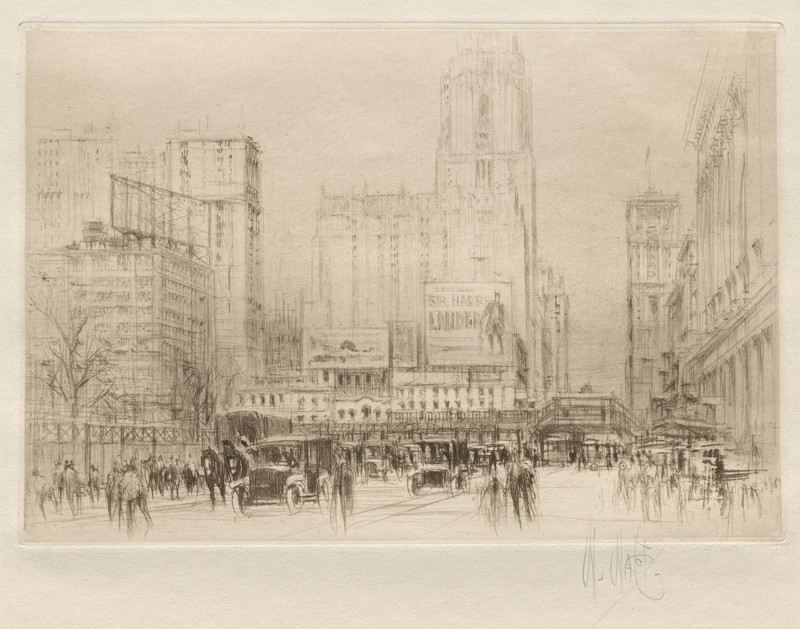Owl Comedy (1926)
Technique: Giclée quality print
Recommended by our customers
More about this artwork
In "Owl Comedy," a fascinating work from 1926, Paul Klee invites us into a mystical universe where the simplicity of forms blends seamlessly with profound depth. This intriguing painting utilizes a mood-setting brown backdrop that subtly transitions from light to dark, providing a canvas that evokes the feel of an ancient wall marred by the passage of time.At the heart of this piece are three owl-like figures drawn with minimalistic yet expressive lines. Each figure, charming and oddly human, gazes out with an almost solemn composure. Their eyes, concentric circles, draw the viewer into a hypnotic trance, enhanced by the swirling patterns atop their heads that perhaps symbolize thoughts or emotions whirling in a dance of confusion and amusement.The color scheme of the painting is notably restrained, predominantly featuring a gradient of browns, which enhances the archaic or timeless quality of the image. This choice of color, coupled with the light strokes used to outline the figures, suggests an interplay of shadows and highlights that give life to these mystical beings."Owl Comedy" is an exemplar of Klee’s ability to infuse humor and seriousness into his subjects, providing a doorway to interpretations that touch on themes of nature, existence, and the whimsical. As the viewer contemplates this artwork, the owls seem to participate in a silent comedy, one where the punchline is left hanging in the subtleties of their expressions and the viewer’s imagination.
Delivery
Returns
Paul Klee was a Swiss-born German artist. His highly individual style was influenced by movements in art that included expressionism, cubism, and surrealism. Klee was a natural draftsman who experimented with and eventually deeply explored color theory, writing about it extensively; his lectures Writings on Form and Design Theory (Schriften zur Form und Gestaltungslehre), published in English as the Paul Klee Notebooks, are held to be as important for modern art as Leonardo da Vinci's A Treatise on Painting for the Renaissance.

